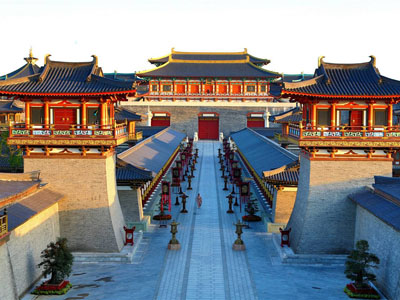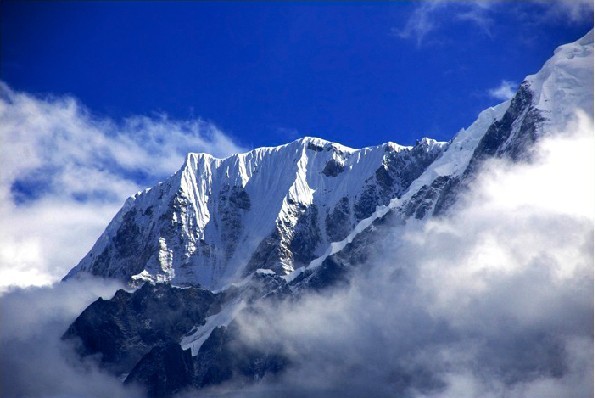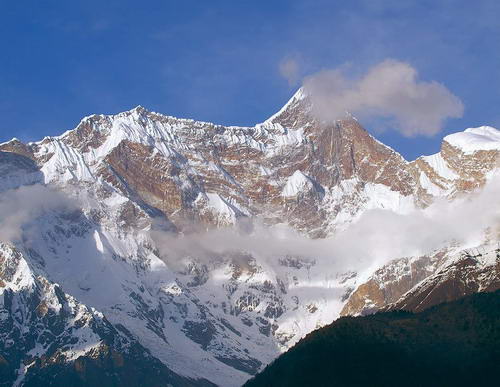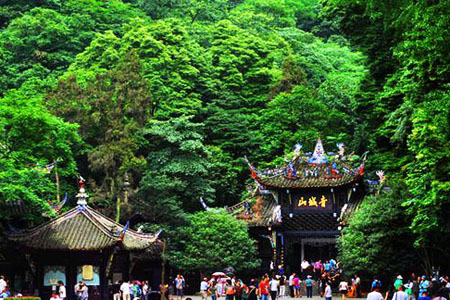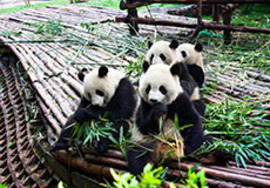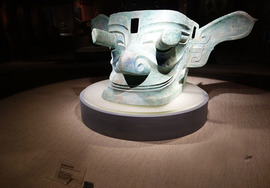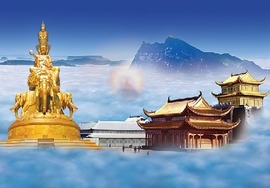Namjagbawar Peak is located at the big bend of the Nyingchi section of the Yarlung Zangbo River Canyon in Tibet. It is also a must-see point for Nyingchi tourism. Namjagbarwa Peak is 7,782 meters above sea level, which is the seventh highest peak in Tibet. However, due to the steep terrain and extremely difficult climbing, it is often called "one of the most difficult climbing in the world".
Here the top of the mountain are peaks towering, beautiful glaciers, which often shrouded in thick mist. And the mountain with the dense vegetation won its reputation of gardens in Tibet. Every spring, there are peach blossoms here attracting tourist worldwide, and photographing the snow peaks hidden by the pink peach flowers is the favorite of many photographers.
About 50 kilometers from Nyingchi City, you can reach the Grand Canyon of Yarlung Zangbo River, and here you can find some close view points of the beautiful peaks, among them the mountain pass of Sejila could be the best to have a panoramic view of Namjagbawar Peak. Besides Namjagbawar peak, there are the Yarlung Zangbo River Grand Canyon and Namjiabawa big turn, peach blossom in Bomi, Forest Sea of Lulang and other attractions can enjoy,
More information of Namjagbawar mountain:
The Qinghai-Tibet Plateau and the Himalayas have been hailed as humankind's last land of mystery, and even regarded as the ''golden key'' that can open the gate of the earth. The most mysterious thing is that at each end of the Himalayas two peaks stand on the mysterious tectonic knots: at the eastern end stands Namjagbarwa and at the western end Nanga Parbat (8,125 meters), the world's ninth highest peak. They not only attach the magnificent length of the Himalayan chain to the southern edge of the Qinghai-Tibet Plateau, but also fix the Eurasian plate to the Indian plate.
The Yarlung Zangbo River has a big turn at the juncture of four counties of Nyingchi, Mainlling, Medog and Bome. To the east of the turn stands the 7,782-meter-high Namagbarwa Peak, the 15th highest peak in the world. In face of the Indian Ocean, it reflects an obvious vertical landform. In its valley is tropical rain forest and above the snow line, it is a snow world. Namjagbarwa has existed for over 700 million years. The first piece of land in the Himalayan region to emerge from the sea, it deserves its title of Number One among the Eastern Himalayan Mountains.
The main peak of the Namjagbarwa pierces the clouds. The legend goes that deities descended from Heaven and burned mulberry leaves on the summit; so the streaming clouds on the high-altitude winds are the smoke from those mulberry fires. It is a sea of clouds all year round.
From the foot of Namjagbarwa, upwards to the 7,782 meters summit, is the following sequence of ecological systems: tropical low mountain evergreen or semi-evergreen monsoon rain forests; sub-tropical mountain evergreen and semi-evergreen broadleaf forests; warm temperate mid-mountain evergreen conifer forests; sub-frigid alpine bushes and grassy marshland; and sub-frigid alpine ice source and frigid ultra-alpine ice and snow. This great abundance of mountain Eco-systems, mountain vegetation forms and bio-communities is compressed in one tight area; it can be rated the best in the world, and as a world, and as a world natural museum of mountain vegetation forms.
In Tibetan, Namjagbarwa means a "long lance piercing into the sky." The sky-scraping Namjagbarwa Peak, with its majestic appearance, precipitous shape and unpredictable climate, has been an ambitious aim of mountain-climbing organizations from various countries, and was only conquered recently by a Sino-Japanese climbing team in 1992.
The blur river water reflects the snow capped peaks, and the crystal-clear glacier winds through the green primal forests. The brightly colored Tibetan villages, the graceful and healthy girls, herds of cattle and sheep on the pastures, and wild flowers of every color in full bloom form a picturesque landscape unfolding before the eyes of every traveler who, too long fettered by the bustle of city life, yearns for the beauty of natural paradise.
The best season:
-May-June: The peaks are less snow, the weather is clear and the view is open.
-October: Autumn colors are gorgeous and the temperature is suitable.
